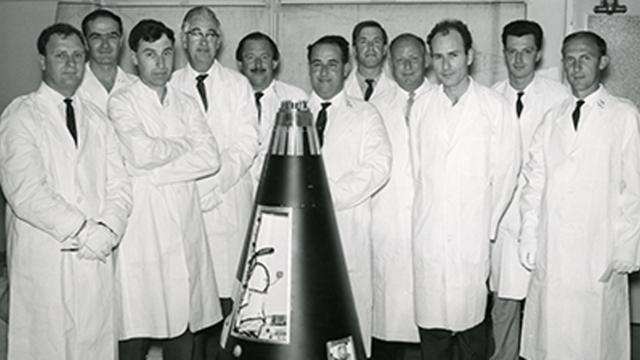On this day in 1967, Australia became the third country in the world to launch its own satellite, from its own territory.
WRESAT was the name of that satellite – after the former Weapons Research Establishment. It was launched from Woomera in South Australia as part of a joint venture between the University of Adelaide’s physics department, and the Weapons Research Establishment.
This was an incredible feat,” says Professor Mike Brooks, Interim Vice-Chancellor at the University of Adelaide. “They were using a modified Redstone rocket donated by the Americans and only had an 11-month window available to plan, design, build and test before launch. Its launch was seen as a huge success for Australia.”
The WRESAT project was led by Bryan Rofe from the WRE and Professor John Henry Carver, who was Elder Professor and Head of Physics at the University.
“Today the University stands ready to contribute to what we believe will be a rapidly developing space industry in Australia, under its new national space agency,” says Professor Brooks.
“We are very proud to have educated former NASA astronaut, Dr Andy Thomas, AO, and we continue to produce highly talented graduates in aerospace and other engineering, as well as generating leading-edge research in areas from aeronautics and high-pressure combustion, through to new developments in space surveillance and space law.”
Earlier this year, a University of Adelaide-built satellite was launched by NASA from Cape Canaveral in Florida – one of three miniaturised “cubesats” developed in Australia and the first Australian-built satellites launched in 15 years.
That work, led by University of Adelaide Research Fellow Dr Matthew Tetlow and his company Inovor Technologies, now based in the University’s new venture incubator ThincLab Adelaide, has led to new research and development in space surveillance.
Working with Associate Professor Tat-Jun Chin from the University’s School of Computer Science, Dr Tetlow and colleagues are developing space situational awareness technologies to help detect and track space objects to support space traffic management. New, low-cost cubesats are again being proposed for this novel object detection technology.
“WRESAT weighed 45 kilograms and was almost 1.6 metres long but miniaturisation has enabled the research equipment of a full-sized satellite to be built into something the size of a loaf of bread,” says Professor Brooks. “This brings a much-reduced cost and opens up the opportunities for widespread involvement in a thriving space industry.”
